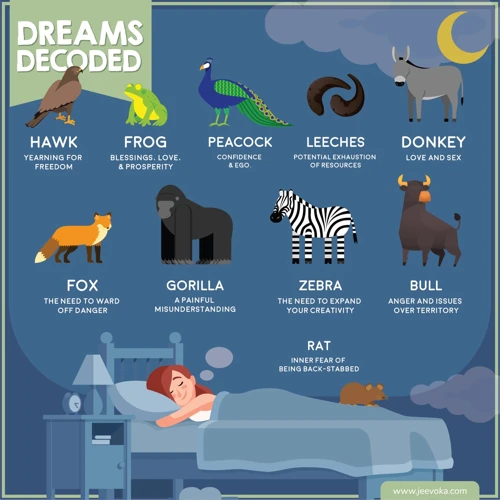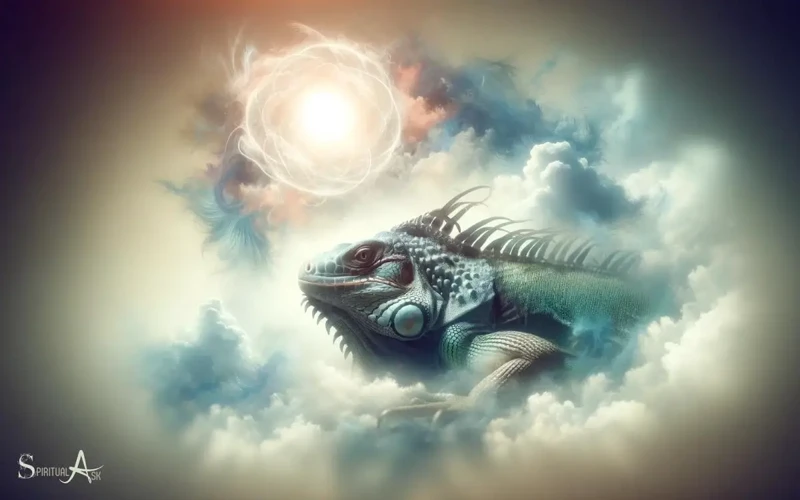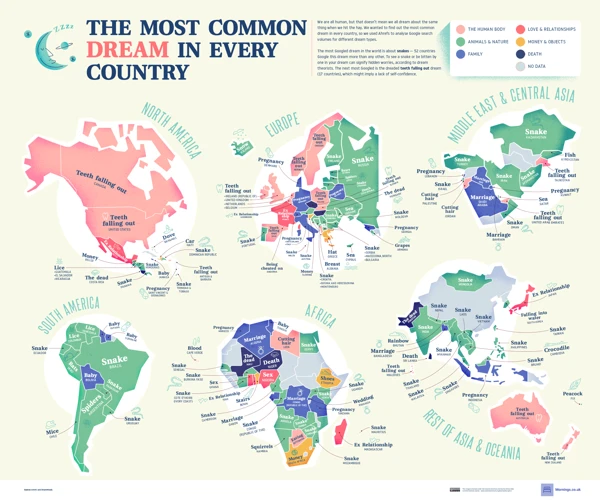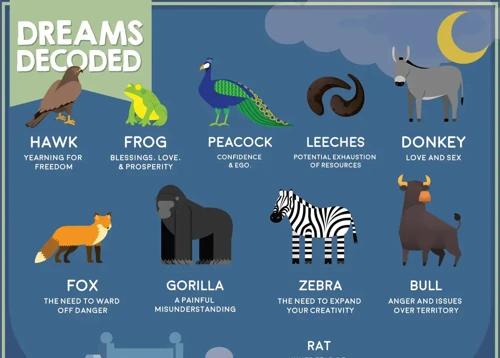Have you ever wondered what goes on in the minds of animals while they sleep? Unlocking the mystery of animal dreams is a fascinating and perplexing subject that continues to baffle scientists and animal lovers alike. While humans can vividly recall their dreams and even interpret their meanings, understanding what animals dream about is a whole different ballgame. In this article, we will delve into the science behind animal dreams, exploring sleep patterns and the phenomenon of REM sleep in various species. We will also examine the behavior and evidence from research that sheds light on interpreting animal dreams. Join us as we embark on a journey to unravel the secrets of the dream world of our furry, feathered, and scaly friends.
The Science of Animal Dreams

Have you ever wondered how animals dream? The science of animal dreams is a complex and intriguing field that researchers are still trying to unravel. One aspect that scientists have studied is the sleep patterns in animals. While humans have a distinct sleep cycle with various stages, animals have their own unique patterns of sleep. Some animals, like dolphins and whales, exhibit unihemispheric sleep, where only one hemisphere of their brain sleeps at a time. Others, such as birds, may engage in short bursts of sleep throughout the day. Then there is the phenomenon of REM sleep, or rapid eye movement sleep, which is associated with dreaming in humans. REM sleep has been observed in a wide range of animals, from mammals to birds and even reptiles. This link between REM sleep and dreaming opens up a world of possibilities when it comes to exploring what animals dream about. It’s a perplexing topic that continues to captivate researchers and animal enthusiasts alike.
1.1 Sleep Patterns in Animals
Sleep patterns in animals vary greatly across different species. Some animals, like lions and tigers, are known for their long periods of uninterrupted sleep, while others, like cows and horses, engage in short bouts of sleep throughout the day. Marine mammals such as dolphins and whales exhibit unihemispheric sleep, where one hemisphere of their brain sleeps while the other remains awake. Certain birds, like mallards, adopt a unique sleep pattern called unihemispheric slow-wave sleep, where one half of their brain is in deep sleep while the other half is awake. Additionally, small mammals like mice and rats have a polyphasic sleep pattern, meaning they nap multiple times throughout the day. Understanding these diverse sleep patterns provides valuable insights into the sleep cycles and dreams of animals. It’s intriguing to think about the dreams that may unfold in the minds of animals as they navigate their unique sleep patterns.
1.2 REM Sleep in Animals
REM sleep, or rapid eye movement sleep, is a fascinating phenomenon observed in animals. This stage of sleep is characterized by rapid eye movements, increased brain activity, and vivid dreaming experiences. Researchers have found that many animals, including mammals, birds, and reptiles, go through REM sleep just like humans. It is during this stage that animals may experience dreams, although the content and nature of these dreams remain a mystery. Some studies suggest that certain animals may exhibit behaviors during REM sleep that are similar to their waking activities, hinting at the possibility of dreaming about chasing prey or flying through the skies. However, further research is needed to gain a deeper understanding of the complexities of REM sleep and unravel the enigmatic world of animal dreams.
Interpreting Animal Dreams

Interpreting animal dreams is a fascinating and challenging endeavor. While we can’t directly ask animals about their dreams, there are various ways researchers and animal behaviorists attempt to understand what animals might be experiencing during sleep. One approach is to closely observe the behavior exhibited by animals during dreaming episodes. For example, dogs often twitch their paws or make running motions while sleeping, which may indicate that they are dreaming about chasing something. Cats may show intense concentration or pounce in their sleep, suggesting they are dreaming about hunting prey. Another method involves gathering evidence from research studies. Scientists use techniques like electroencephalography (EEG) to measure brain activity during different sleep stages and look for similarities with human REM sleep, which is associated with dreaming. While we may never know the exact content of an animal’s dream, these approaches provide valuable insights into the fascinating world of animal dreams.
2.1 Animal Dream Behavior
Animal dream behavior is a fascinating area of study that sheds light on what animals experience during their slumber. While we can’t directly ask animals what they dream about, we can observe their behavior during sleep and make educated guesses. Some animals exhibit dream-like behaviors during sleep, such as twitching, whimpering, or moving their limbs as if in pursuit or play. For example, dogs often exhibit running or chasing movements, indicating that they may be dreaming about engaging in activities like playing fetch or chasing after prey. Cats may display pouncing behaviors, suggesting they are dreaming about hunting and capturing their prey. These dream behaviors provide valuable insights into the possible dream scenarios that animals may be experiencing during their sleep. Linking this behavior to their natural instincts and activities in their waking life, we can begin to decipher the mysteries of what animals dream about.
2.2 Evidence from Research
Animals cannot directly communicate their dreams to us, so scientists rely on a variety of methods to gather evidence about animal dreaming. One approach is through the observation of behaviors exhibited by animals during sleep. For example, researchers have observed dogs twitching, paddling their paws, and making sounds while in REM sleep, which suggests that they may be dreaming about activities such as chasing or retrieving. Another method involves monitoring brain activity in animals during sleep using electroencephalography (EEG) and positron emission tomography (PET) scans. These studies have revealed similarities in brain activity between animals and humans during REM sleep, supporting the idea that animals experience dreams. Additionally, experiments involving the manipulation of neural activity in animals during sleep have provided further evidence for the existence of dreams in animals. While the exact content of their dreams remains a mystery, these research findings suggest that animals do indeed dream, offering a fascinating glimpse into their inner world.
Common Dreams in Different Species

Animals, much like humans, have their own unique dreams that vary across different species. Let’s explore some common dreams experienced by our furry, feathery, and scaly friends. Dogs, known for their playful and active nature, often dream about chasing and retrieving objects. You may have observed your dog’s paws twitching or their legs running in their sleep, a clear indication of their dream adventures. Cats, on the other hand, tap into their hunting instincts during their dreams, often pouncing on imaginary prey with precision and grace. Birds, with their ability to soar through the skies, likely have dreams filled with fluttering wings and aerial acrobatics. Horses, known for their love of open spaces, may be seen galloping through meadows in their dreams, enjoying a sense of freedom and movement. Aquatic creatures, such as dolphins or whales, may experience the joy of swimming and diving through the deep blue sea. And let’s not forget our primate relatives who likely dream about social interactions, climbing trees, and swinging through branches. Each species has its own unique dream experiences, offering us a glimpse into their fascinating subconscious worlds.
3.1 Dogs: Chasing and Retrieving
When it comes to dogs and their dreams, it’s not uncommon to see them engage in behaviors that reflect their real-life activities. Dogs often dream about chasing and retrieving objects, which could be a manifestation of their innate hunting instincts and playful nature. You may notice their legs twitching, as if they’re running after a tennis ball or frantically digging in their sleep. These dreams could be a reflection of their desire for exercise and the joy they experience during playtime. It’s fascinating to think about the adventures that dogs embark on in their dream world, whether it’s chasing a squirrel up a tree or catching their favorite toy. It’s like they have their own little imaginary playground where they can let loose and have fun. So, the next time you see your furry friend twitching or wagging their tail in their sleep, remember that they might just be chasing and retrieving their dreams.
3.2 Cats: Pouncing on Prey
Cats are known for their agility and hunting instincts, and it’s no surprise that these behaviors translate into their dreams. When cats dream, they often exhibit movements and behaviors related to hunting and capturing prey. You may observe your cat twitching, twitching their whiskers, or even pouncing in their sleep. These dream sequences are believed to be a reflection of their natural instincts and experiences while awake. It’s fascinating to think about what might be going through a cat’s mind during these dreams. Perhaps they are reliving successful hunts or imagining the thrill of chasing their next target. Whatever the case, watching a cat dream about pouncing on prey provides a glimpse into their wild nature and serves as a reminder of their ancestral lineage.
3.3 Birds: Soaring through Skies
Birds are known for their ability to soar through the skies, and it seems that this love for flight carries over into their dreams as well. When birds enter the dream realm, their visions often involve gliding effortlessly through the air, performing intricate aerial maneuvers, and exploring vast expanses of open skies. Whether it’s an eagle gracefully riding on updrafts, a hummingbird darting from flower to flower, or a flock of geese flying in formation, birds experience the exhilaration of flight even when they are fast asleep. These dreams of soaring through the skies may be a reflection of their innate desire for freedom and their natural inclination to explore their aerial surroundings. As they dream, their wings may flap virtually as they navigate the dream landscape, giving them a temporary taste of the freedom and wonder that comes with being airborne. So, the next time you see a bird take to the skies, remember that their dream world is just as captivating as their real-world flights.
3.4 Horses: Galloping in Meadows
Horses are majestic creatures known for their grace and power, and it is no surprise that they often dream about galloping in meadows. As they peacefully sleep, their minds transport them to vast open fields where they can run freely and feel the wind in their manes. This dream behavior is believed to be a reflection of their natural instincts and innate desires for movement and freedom. The sight of horses galloping in their dreams is truly a sight to behold and a testament to their strong connection with nature. It’s as if they are reliving their most cherished moments of freedom and joy. So, if you ever catch a glimpse of a sleeping horse with legs twitching and a peaceful expression on its face, you can rest assured that it is immersed in the blissful dream of galloping in meadows.
3.5 Aquatic Creatures: Swimming Delights
Aquatic creatures have their own delightful dreams when they slumber beneath the waves. From playful dolphins leaping through the surf to graceful sea turtles gliding through the depths, these creatures experience a dreamlike dance in the underwater world. In their dreams, **aquatic animals may navigate vast coral reefs, chase elusive prey, or swim alongside schools of shimmering fish**. It’s a realm of wonder and mystery, where the boundaries of reality blend with the imagination. While the exact content of their dreams remains unknown to us, it is clear that the aquatic creatures’ dreams are filled with the joy and freedom of their watery domain. So, next time you encounter a dolphin or catch a glimpse of a sea turtle, imagine the vivid dreams that transport them to a world underwater, a dream world that holds its own mesmerizing secrets.
3.6 Primates: Social Interactions
Primates, such as monkeys and apes, are known for their complex social interactions, and their dreams often reflect these relationships. In their dream world, primates may engage in activities that are central to their social lives, such as grooming, playing, or establishing hierarchies within their groups. These dreams could potentially help them navigate the intricate dynamics of their social structures. Researchers have observed that primates show increased brain activity in regions associated with social cognition during REM sleep, indicating that their dreams may revolve around social interactions and relationships. It’s fascinating to imagine the vivid and intricate dreamscapes that primates experience as they navigate their social world.
Uncharted Territories: Wild Animal Dreams
The realm of wild animal dreams is a vast and uncharted territory. While we may speculate on what wild animals dream about, the truth remains unknown. However, the behaviors and activities witnessed during their waking hours can provide some clues. For example, predatory animals like lions and tigers may dream about hunting and stalking their prey, while herbivores like elephants or giraffes may dream about peacefully grazing in the vast savannah. The dreams of wild animals are likely influenced by their instinctual behaviors and the challenges they face in their natural habitats. While we can only make educated guesses about their dream experiences, the mystery surrounding wild animal dreams adds to their allure and captures our imagination. But [dreams about fire ants] or [dreams about spiders biting you] or [dreams about a bear chasing me] remain uncharted territories that leave us wondering about the inner world of these majestic creatures.
Conclusion
In conclusion, the world of animal dreams is a captivating and mysterious realm that continues to fascinate scientists and animal lovers alike. While we may not have all the answers yet, the science of animal dreams is slowly uncovering fascinating insights into the sleep patterns and dream behaviors of different species. From dogs to cats, birds to horses, and even aquatic creatures, each species seems to have their own unique dream experiences. As our understanding of animal dreams evolves, it opens up a world of possibilities for further exploration and research. Who knows, maybe one day we’ll be able to decipher the intricate dreams of our animal companions. Until then, we can only marvel at the mysteries of their slumber and the wonders of the animal kingdom.
Frequently Asked Questions
1. What is REM sleep in animals?
REM sleep, or rapid eye movement sleep, is a stage of sleep characterized by rapid eye movements, increased brain activity, and vivid dreaming. It is observed in many animal species, including mammals, birds, and reptiles.
2. Do all animals dream?
While it is difficult to measure and interpret animal dreams definitively, research suggests that many animals do indeed experience some form of dreaming. The presence of REM sleep, which is associated with dreaming in humans, in various animal species supports this idea.
3. Are animal dreams similar to human dreams?
It is challenging to determine the similarities between animal and human dreams since we cannot directly communicate with animals about their dream experiences. However, studies have shown that animals may exhibit similar brain activity and movements during sleep, indicating some similarities in dream processes.
4. Can animal dreams be interpreted like human dreams?
Interpreting animal dreams is a speculative endeavor since we cannot directly understand their meanings. However, by observing animal behavior during sleep, researchers can make educated guesses about the content of their dreams based on their everyday activities and experiences.
5. Do different animal species have different dream patterns?
Yes, different animal species exhibit varied sleep patterns, including the duration and frequency of REM sleep. For example, mammals tend to have more REM sleep than reptiles and birds. These differences in sleep patterns may also contribute to variations in dream experiences among animal species.
6. Can animals have nightmares?
While we cannot definitively determine if animals experience nightmares, some animals may exhibit distress or fear-like behaviors during sleep, suggesting the possibility of unsettling dream content. However, further research is needed to fully understand the nature of animal nightmares.
7. Do animals act out their dreams?
Yes, some animals exhibit muscle twitches, eye movements, and vocalizations during sleep, indicating that they may be acting out their dreams. This phenomenon is most commonly observed during REM sleep, when dreaming is believed to occur.
8. Are there any dangers associated with animal dreaming?
Animal dreaming itself is not inherently dangerous. However, if animals are acting out their dreams with intense physical movements, it could potentially lead to accidents or injuries. In most cases, animals are naturally equipped to prevent harm to themselves or their surroundings while dreaming.
9. Can animals remember their dreams upon waking up?
Since animals cannot communicate their dream experiences, it is challenging to determine whether they remember their dreams upon waking up. However, some animals may exhibit behaviors suggesting that they recall certain aspects of their dreams, such as searching for objects or exhibiting signs of satisfaction after a dream-related activity.
10. Can studying animal dreams help us better understand human dreams?
Studying animal dreams can provide valuable insights into the functions and mechanisms of dreaming as a whole. By comparing similarities and differences between animal and human dream processes, researchers can gain a deeper understanding of the purpose and significance of dreams in general.







